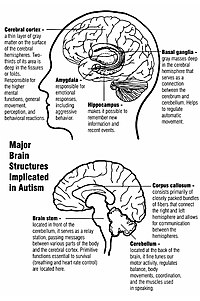
Photo from wikipedia
Argininosuccinic aciduria (ASA), which is considered to be the second most common urea cycle disorder (UCD), is caused by an argininosuccinate lyase deficiency and is biochemically characterized by elevation of… Click to show full abstract
Argininosuccinic aciduria (ASA), which is considered to be the second most common urea cycle disorder (UCD), is caused by an argininosuccinate lyase deficiency and is biochemically characterized by elevation of argininosuccinic acid and arginine deficiency. In addition to hyperammonemia, other characteristic features of ASA include hepatic fibrosis, hypertension, neurocognitive deficiencies, and trichorrhexis nodosa. Herein, we retrospectively reviewed the clinical findings, biochemical profiles, and genotypic characteristics of five Korean patients with ASA, who showed typical phenotypes and biochemical findings of the disease. Molecular analysis of these patients revealed six novel ASL mutations. Next, we investigated the prevalence of all types of UCDs in Korea. Of note, over a two decade periods, ASA was only detected in 6.3% of patients with a UCD, which made it the fourth most common UCD in Korea. In comparison with Caucasians, in whom ASA is the second most common UCD, ASA is comparatively rare in East Asian populations, including Japanese and Koreans. These findings suggest the possibility of geographic variation in UCDs among ethnic groups.
Journal Title: Journal of Human Genetics
Year Published: 2018
Link to full text (if available)
Share on Social Media: Sign Up to like & get
recommendations!